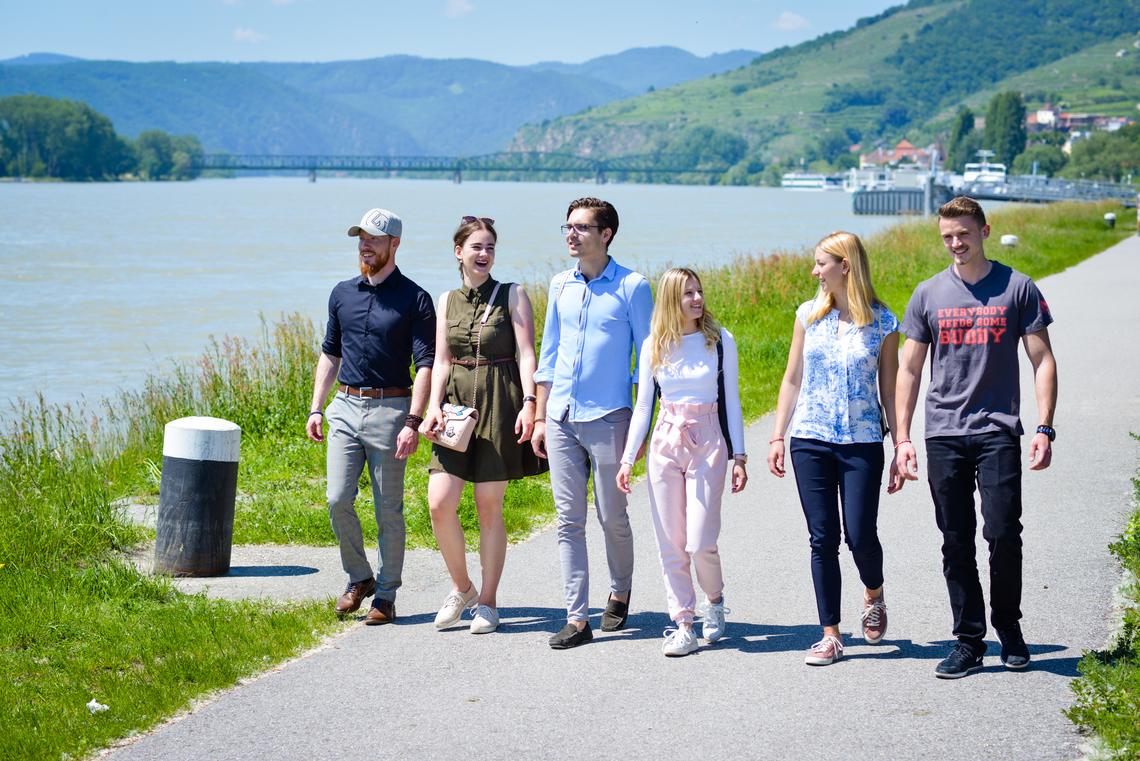Press
Considering climate change in the offer

When it comes to spending free time together in summer, everyone studies the weather forecast. Whether it’s a young family or retired a couple, teenagers in love or a choir group: how hot it will be and whether strong winds or rain is forecast influences the choice of destination – and no longer just for a mountain hike or a swimming trip.
Target groups in tourism can no longer be categorised solely by age and marital status. Sensitivity to heat, lifestyle, mobility options, the feeling of safety and whether well-being will improve at the destination are also factors in customers’ considerations. In the summer season, climate change means that heatwaves, heavy local rainfalls and storms occur more frequently – in winter, not all high-altitude regions are guaranteed to have snow.
With its wealth of sights, natural and cultural attractions, Lower Austria is in a fortunate starting position, but all operators are called upon to adapt to climate change in its diversity and range. Sustainability is already firmly anchored as a central theme in the course programme at the Institute for Tourism, Wine Business and Marketing at IMC Krems. For the ClimATT II research project, IMC Krems and the University of Natural Resources and Life Sciences joined forces to analyse the conditions and adaptation strategies of 34 Lower Austrian attractions. Part of the project was also to survey any changes in visitor behaviour.
Climate change effects everywhere
“Some of the persons responsible are visionary in what they do, some are still taking a wait-and-see approach, but everyone is aware that climate change is having an impact on their offers,” says Claudia Bauer-Krösbacher, Programme Director of the Tourism & Leisure Management programme, describing the initial results of the in-depth survey. The project is funded by the state of Lower Austria as part of the RTI Call 2020 on the topic of “Climate Change”. In autumn 2024, a handbook providing concrete assistance will be published, summarising the results and recommendations.
We can see it in ourselves: a hot day affects our motivation, receptiveness, mood and activity levels. “What can we offer on such a day to remain attractive?” is a question that managers of attractions are faced with, from monasteries to the nature parks and from river baths to mountain hut landlords. The level of concern varies due to the diversity of the attractions. For example, natural attractions are relentlessly exposed to weather conditions, but green spaces also need to be taken care of in historic buildings and if a storm damages the roof of a listed building, many other questions arise. Bauer-Krösbacher describes the awareness of the need for action and the level of concern as generally high.
In-depth survey also for political control
Over the past three years, a quantitative survey was conducted to determine which impacts of climate change are already being felt most strongly in tourism. “We looked at and discussed various direct and indirect effects. The direct effects are a challenge in themselves, but they entail further effects. For example, trees damaged by extreme weather make more safety inspections in parks necessary, and the risk of forest fires increases during hot and extremely dry periods in summer.” Even with the best efforts, there is a limit to what can be done by operators. This was revealed in the in-depth and anonymised survey of 34 tourist attractions in Lower Austria. Despite all the focus on measures and offers on the provider side, politics also comes into play with funding, transport and changes in legislation. Just think of shifting opening hours to the cooler morning or evening hours, refurbishing buildings, cooling, climate-friendly planting, watering outdoor facilities, constructing water features, unsealing the ground, drinking fountains, benches and shady areas or increased inspections, health training and revised risk plans – all of which also mean higher costs.
Mobility was also identified as a major challenge. The so-called last mile must be addressed accordingly, because what use is a beautiful, remote and cool attraction if it is difficult or impossible to reach by public transport? In Austria’s ski regions, there are already innovative approaches to sustainable mobility solutions through increased cooperation with public transport. In Lower Austria, linking mobility offers to the well-established Niederösterreich Card would be a good idea – from reduced intervals to cost reductions during the main excursion season. On the other hand, the rise in average temperature is also extending the season for many sights and destinations, shifting visitor peaks. Higher altitudes benefit overall because it is more pleasant there in summer. Skiing in winter, on the other hand, is difficult to replace, and an unheated castle cannot simply stay open in December.
Everyone is called upon to come up with new products and create a suitable USP. “It requires a different way of thinking. Tourism has always evolved. Today, we have to think more about how we use our resources and also create a high quality of life for the people who always live in tourism areas.”
There is strength in diversity
The cultural and natural offerings in Lower Austria are unrivalled. Investments and funding are high in the state. The study of different sizes of businesses, climate zones and types of attractions – from the lowlands to the Alpine foothills, from the Danube region to the Waldviertel region – is a first step towards finding out where the problems lie and what the various destinations need in order to stay open.
Author: Astrid Kuffner
